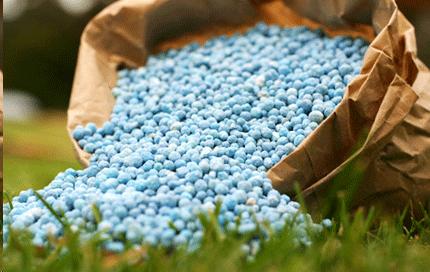|
NOVIDADES
The "Green Revolution" of the '60s and '70s has been credited with helping to feed billions around the world, with fertilizers being one of the key drivers spurring the agricultural boom. But in developing countries, the cost of fertilizer remains relatively high and can limit food production. Now researchers report in the journal ACS Nano ("Urea-Hydroxyapatite Nanohybrids for Slow Release of Nitrogen") a simple way to make a benign, more efficient fertilizer that could contribute to a second food revolution. Farmers often use urea, a rich source of nitrogen, as fertilizer. Its flaw, however, is that it breaks down quickly in wet soil and forms ammonia. The ammonia is washed away, creating a major environmental issue as it leads to eutrophication of water ways and ultimately enters the atmosphere as nitrogen dioxide, the main greenhouse gas associated with agriculture. This fast decomposition also limits the amount of nitrogen that can get absorbed by crop roots and requires farmers to apply more fertilizer to boost production.  Nanoparticles will help you get through the washing up. Image: Flickr/Nik Stanbridge, CC BY-NC-ND
To do this, the researchers developed a simple and scalable method for coating hydroxyapatite (HA) nanoparticles with urea molecules. HA is a mineral found in human and animal tissues and is considered to be environmentally friendly. In water, the hybridization of the HA nanoparticles and urea slowly released nitrogen, 12 times slower than urea by itself. Initial field tests on rice farms showed that the HA-urea nanohybrid lowered the need for fertilizer by one-half. The researchers say their development could help contribute to a new green revolution to help feed the world's continuously growing population and also improve the environmental sustainability of agriculture. American Chemical Society. Posted: Jan 25, 2017. Assuntos Conexos: |
|||||||||||||||||||||||||